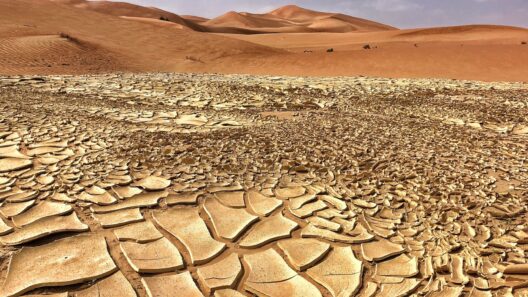Mexico is a nation rich in biodiversity, culture, and geological diversity, which is reflected in its climatic variety. This intriguing amalgamation leads to a plethora of microclimates ranging from arid deserts to lush tropical jungles. Understanding the different types of climates that span this vast country is crucial not just for residents, but for anyone interested in the broader implications of climate change and environmental sustainability.
At the most fundamental level, Mexico’s geography consists of mountains, plateaus, and coastal plains, which all contribute to its climatic diversity. As one traverses this nation, one may experience a swift transition from one climate zone to another, occasionally marked by stark contrasts in temperature, rainfall, and vegetation. The interplay of altitude and latitude creates microclimates that can be both surprising and enlightening.
Starting in the northern regions, we encounter the arid desert climate. Here, the Sonoran and Chihuahuan deserts dominate, characterized by scorching temperatures during the day and substantial drops at night. The scarcity of rainfall is the hallmark of these areas, producing a stark landscape dotted with cacti and resilient shrubs. These areas, while inhospitable to many, teem with life uniquely adapted to endure the harsh conditions.
As one moves south, the climatic narrative evolves. The semi-arid regions serve as a transition between the arid north and the more temperate zones. As you approach the central highlands, the elevation climbs, leading to a cooler environment often described as a steppe climate. This area supports an intriguing assortment of flora and fauna. The temperature variations between day and night become notably pronounced, resulting in a unique blend of ecosystems.
The central plateau, lying between the Sierra Madre mountain ranges, presents yet another shift in climate. Here, the elevation results in a temperate climate, characterized by a dry season and a wet season. This fertile ground allows for agriculture to thrive, and it is no wonder that many of Mexico’s significant cities, such as Mexico City, have developed in this region. The central plateau captures the essence of Mexico’s climatic extremes and demonstrates how diverse environments can coexist.
Further south, a remarkable transformation occurs as the landscape morphs into a tropical paradise. The coastal regions along the Pacific and the Gulf of Mexico experience a tropical climate, with warm temperatures and abundant rainfall throughout the year. This climate fosters the growth of dense rainforests, mangroves, and a variety of plant and animal species that are vital to ecological balance. The rich biodiversity found in these areas is not just a testament to the thriving ecosystems but also a crucial resource for local communities and the economy.
One cannot underestimate the importance of the Yucatán Peninsula, where the climate is predominantly tropical. This region is renowned for its stunning beaches and archaeological marvels, but it also grapples with the effects of climate change. Rising sea levels and increased storm intensity pose significant threats to this delicate ecosystem, urging an immediate and concerted response from both national and international communities.
Yet, it is in the intersection of these climatic zones where Mexico’s environmental narrative becomes particularly compelling. The contrast between the dry northern deserts and the tropical south invites a conversation about how varied climates impact agriculture, biodiversity, and even culture. Farmers in the arid regions must implement innovative irrigation techniques to sustain crops, while those in tropical areas may adopt practices that protect against soil erosion and preserve water quality.
Moreover, the traditional knowledge of indigenous communities in harnessing their local climates offers invaluable lessons. These communities have thrived for centuries by utilizing sustainable practices that align with their climatic realities. Capturing this wisdom not only aids in the fight against climate change but also upholds cultural heritage.
However, Mexico is not immune to the ramifications of global warming. Increased temperatures, alterations in rainfall patterns, and extreme weather events have begun to affect all climatic regions. Some areas are witnessing prolonged droughts, while others experience torrential rains and flooding. These developments challenge existing agricultural systems and threaten water supplies, accentuating the need for adaptive measures in both rural and urban settings.
Addressing these challenges will require an elevation in collective consciousness regarding the environment. An informed citizenry can better advocate for policies that protect Mexico’s rich climatic diversity. Education about climate systems and ecological conservation is paramount, fostering a generation that is not only aware of these pressing issues but also equipped with the tools to address them.
As we contemplate the future of Mexico’s climate, it is evident that change is not just possible; it is necessary. By shifting our perspectives and engaging with the diverse climatic realities of this beautiful nation, we can cultivate a deeper understanding of our relationship with the environment. The promise of a more sustainable future awaits, but it requires commitment, curiosity, and collaboration from all facets of society.
In conclusion, the question of what type of climate Mexico has encompasses a complex tapestry woven together by distinct ecosystems, communities, and challenges. From arid deserts to tropical paradises, every climatic zone is a vital part of the larger narrative. As we explore these intricacies, we unlock potential solutions for a balanced coexistence with nature, paving the way for a more resilient future amidst the inevitable changes that lie ahead.







